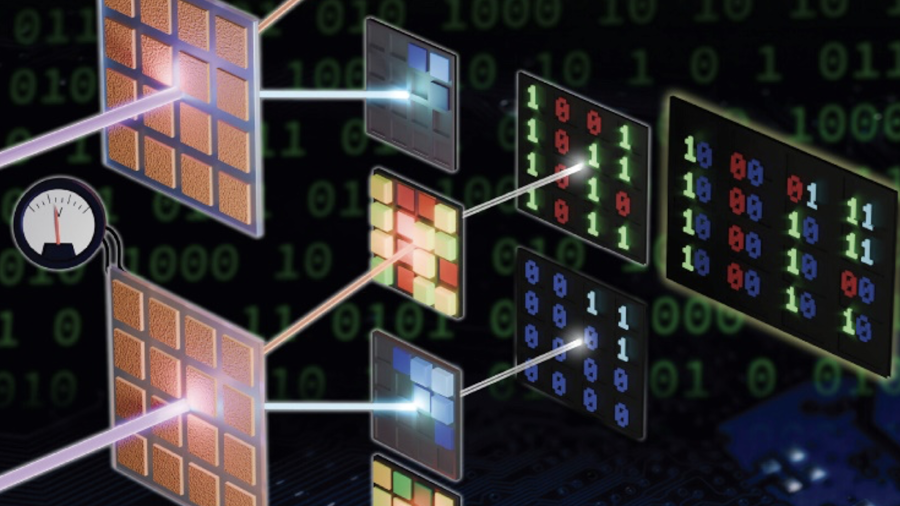UAB and ICN2 researchers have developed a novel data encoding system based on luminescent materials. Additionally, one of the images utilized to illustrate this publication has been selected as the frontispiece cover for the journal Advanced Functional Materials.

Scientists from the ICN2 Nanostructured Functional Materials Group, including Dr Claudio Roscini (Senior Researcher) and Prof. Daniel Ruiz-Molina (CSIC Researcher and Group Leader), in collaboration with researchers from the Chemistry Department of the Autonomous University of Barcelona (UAB), Prof. Jordi Hernando, and Dr Jaume Ramón Otaegui, have developed a novel digital encoding and data storage system based on a combination of microcapsules containing different luminescent dyes and phase change materials. This work represents an important step forward in the field and could be key to the development of complex encryption systems for different areas such as cybersecurity or anti-counterfeiting. This work has been published in the journal Advanced Functional Materials.
How does this technology work?
This paper presents a new strategy for digital data encoding and storing in an effective, cheap, and easy-to-read way. The researchers created a pixel system using microcapsules containing a mixture of fluorescent dyes and phase change materials (i.e. paraffins). These phase-change materials are normally known for their capacity of absorbing and emitting heat in response to a change in temperature. In this work, the researchers exploited the phase transition of these materials to encode data according to the different emitting colours and the phase of the paraffin in response to heat.
These novel pixels are able to respond to changes in temperature or voltage by changing the colour of the light they emit. This allows the system to perform two types of advance data encoding operations: three-dimension (3D) data encryption and four-dimension (4D) data storage. In summary, the three dimensions would be determined by the position (2D, like in QR codes) and colours (3D) of the pixels, while the fourth dimension is given by the material's response to temperature.
This technology could be applied in areas such as anti-counterfeiting or high-density data storage, offering low-cost, high-efficiency solutions with sufficient complexity.
Frontispiece cover design
Furthermore, it is important to note that the journal Advanced Functional Materials has used an illustration of the article as one of the frontispiece covers of its latest issue. The design was executed by the graphic designers from the ICN2 Marketing, Communication, and Fundraising team.
Reference article
Otaegui, JR; Ruiz-Molina, D; Hernando, J; Roscini, C. (2024). Multidimensional Data Encoding Based on Multicolor Microencapsulated Thermoresponsive Fluorescente Phase Change Materials. Advanced Functional Materials. https://doi.org/10.1002/adfm.202402510.






